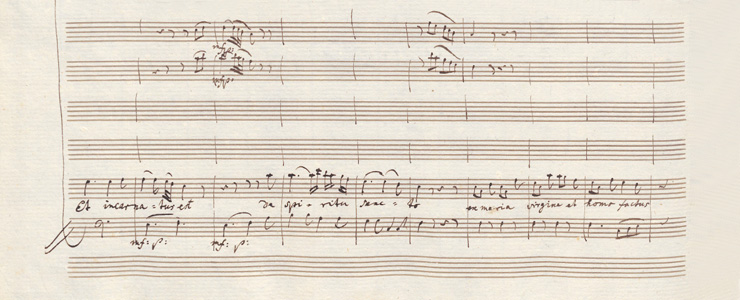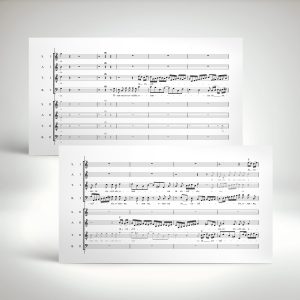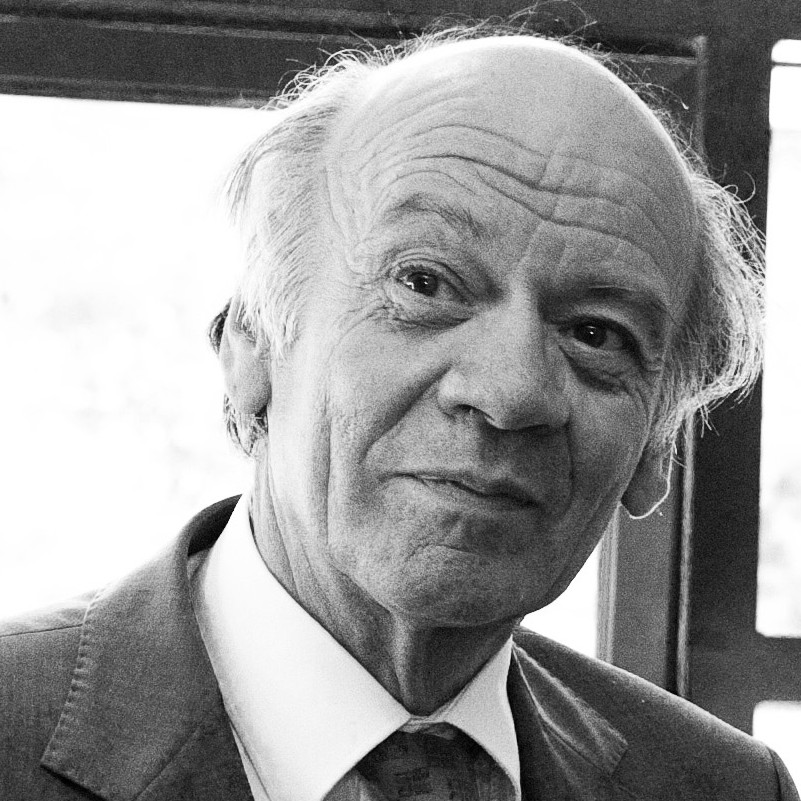Mozart’s Great C-minor Mass: We can do better!

Mozart’s ‘Great Mass’ in C minor deserves performing venues allowing the work’s double-choir antiphony to have its proper spatial effect and an edition offering trumpets & timpani parts in the ‘Credo’, Mozart-style strings in the ‘Et incarnatus est’, and pairwise imitation and equal distribution of subject entries in its Sanctus reconstruction.
Dear Mozart lover,
As you will probably agree, Mozart’s C-minor Mass K. 427 is one of the most impressive and profound mass settings ever written. It is a perfect amalgam of all the genres and styles known in the late 18th century, from early polyphony to galant style, and yet a wonderfully balanced musical unity, in spite of its incompleteness.
It is also a work featuring a double choir at the centre of each of its two halves: the tragic lamento-based ‘Qui tollis’ in the first, the grand and highly uplifting ‘Sanctus’ in the second half. The latter movement alas survived incompletely, the lost main score having to be reconstructed.
However, the Mass’s expressive potential as a double-choir work is still rarely exploited in full. Performances are often done in venues with insufficient space, thus not allowing the work’s double-choir antiphony to have its proper effect. And most of the existing Sanctus reconstructions are not as effective as they could be.
This is unfortunate. For just like in double-choir works by Willaert, Palestrina, Lassus, the Gabrieli’s, Schütz, and later Bach (St. Matthew Passion) and Handel (Israel in Egypt), Mozart alternately pitches the two choirs against each other and allows them to join forces. Polychoral scoring was typically developed in churches of ample size, inspiring composers to use the spatial possibilities by positioning the choirs somewhat apart from each other. Present-day performances of double-choir works will therefore benefit from the use of venues offering the space needed for effective antiphonal singing.
In addition to the use of two choirs, Mozart’s C-minor Mass, like many of his earlier masses, features ‘Solo’ and ‘Tutti’ indications in the organ part. This perfectly matches Leopold Mozart’s 1757 description of the use of two organs in the Salzburg Cathedral: one on one of the east balconies at the Cathedral’s crossing, for the organo concertato part, playing continuously; and a small ‘choir organ’ placed on the presbytery floor with the choir, for the organo ripieno part, playing the Tutti sections only.
Mozart’s acceptance of St. Peter’s Abbey Church for the 1783 Salzburg performance of the C-minor Mass must have been a fallback solution, necessary since he no longer could perform in the Cathedral, the domain of his archenemy, Archbishop Colloredo. The small and narrow St. Peter’s single organ loft can hardly have accomodated all the forces required for the work, let alone have allowed its double-choir scoring to be effective.
But apart from choosing an appropriate venue, what we need is an edition offering a reconstruction of the Sanctus’s ‘Osanna’ fugue that distributes the melodic material equally and effectively over the eight voices. What most editions do is to separate the two subjects of this double fugue, assigning each to its own choir. In practice this is ineffective. The listener’s attention is tossed from left to right and back far too often. The other solution, always keeping the two subjects together in the same choir, alternately left and right, is much more practical. And it is backed up by the old tradition of pairwise imitation and examples in works by Caldara and J.C. Bach, composers known very well by Mozart. Moreover, the genre requires that all of the eight voices should contain at least one entry of each subject, a requirement none of the editions has fulfilled so far.
As dramatic as the double-choir movements can be, just as striking are the contrasts with the more intimate movements of the Mass. The most intimate one is no doubt the ‘Et incarnatus est’, a soprano aria with an obbligato solo woodwind trio in quiet siciliano rhythm, subtly conjuring up the picture of the birth of the child Jesus, the entrance of the shepherds and Maria’s quiet wonder. Mozart completely composed this movement in outlines, but never came to fill in the high strings (violins and viola) from the entrance of the soprano onwards. They have to be completed.
Here as well there are chances that not every edition realises. All of Mozart’s slow arias, concerto and symphony movements can serve as models. Some of these feature muted upper strings, some accompanying horns, some both. These options fit this aria well. But much more important is the quality of the completion of the string setting, its harmony, its voice leading.
A good example is the realisation of the mfp’s in bars 20-21, just after the entrance of the soprano. First of all, this has to be one chord of the same length in all strings, otherwise a mfp does not work; see this Mass’s ‘Quoniam’, bb. 122 ff, or the Concerto K. 413/ii, bb. 21-22. Then, even more important, it has to be a V6/5-chord, not a vii7. Why? Because of the melody! Its d’’ is not a chord note but an embellishment! The melody’s real chord note is the b-flat’, reached just before the chord change to the tonic with the third a’ in the top. See also this very aria, bb. 34/6 to 35, the Concerto K. 488/ii, bb. 25-26, or the song ‘Das Traumbild’, K. 530, b. 4. The tender, warmly embracing effect of the dominant in 6/5 position is exactly what this moment is asking for. It throws the melody into its proper relief. A vii7 has a different, more terse feeling to it and moreover would have to resolve to a tonic with the fifth in top; see e.g. Idomeneo, No. 22, bb. 39-41, or the Concerto K. 453/i, bb. 13-14. Yet, many completers and conductors still cannot say goodbye to the ‘verkürzte Dominante’ they are used to. How about K. 488 then, friends? Unverkürzt, und so schön!
No ‘Credo in unum Deum’ of a late-eighteenth-century solemn mass is without trumpets and timpani. It is easy to see why they are not in Mozart’s autograph of this movement: there was no space for them on his 12-stave paper! So, apart from a completion of the missing string and wind parts, an edition should at least provide optional trumpet and timpani parts. Crucial, then, is their placement: in the uneven, or in the even bars? Placed in the even bars, joining the winds, they will infringe upon Mozart’s subtle woodwind and horns colour, and upon the choir’s statements later on. Having them double the string unisons in the uneven bars, however, is something rarely done by Bach or Handel, the movement’s main inspirators. It sounds somewhat belligerent for a Credo too, and becomes a bit tiresome in the many repeats. For my new edition, I opted for a leaner version of the latter solution, just bridging the gaps in the choral statements, like Bach did in many of his cantata opening choruses.
All in all, this is a plea for thinking more seriously about the choice of an edition and a venue for performing this Mass. Its unique richness of styles and moods will benefit!
Clemens Kemme, Amsterdam




















